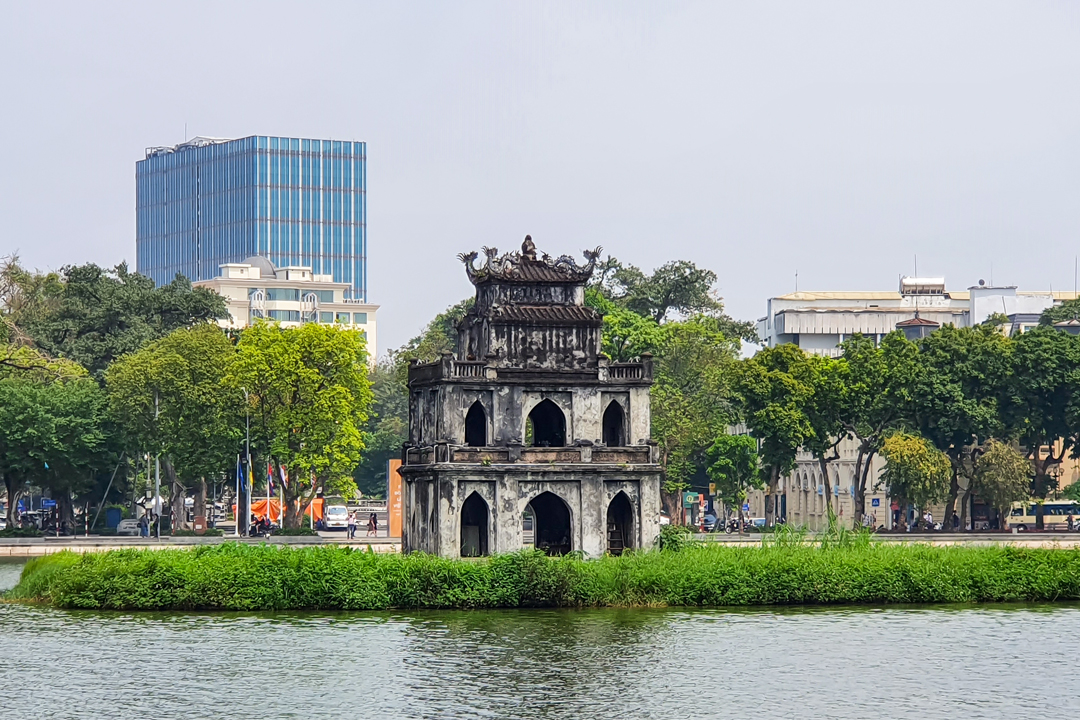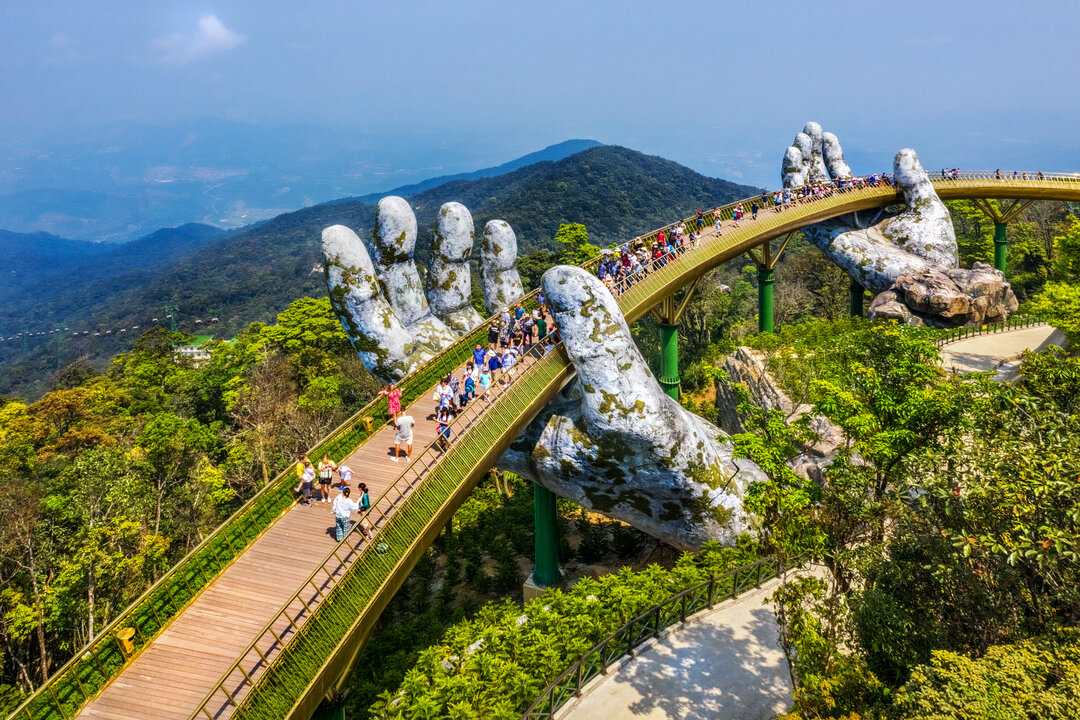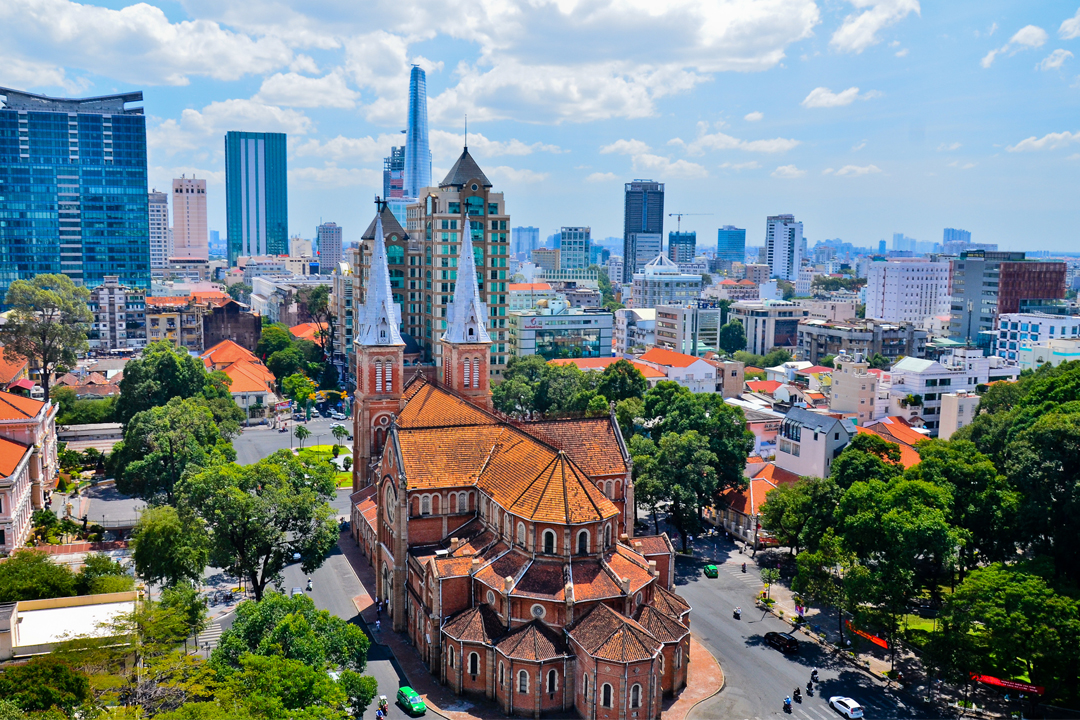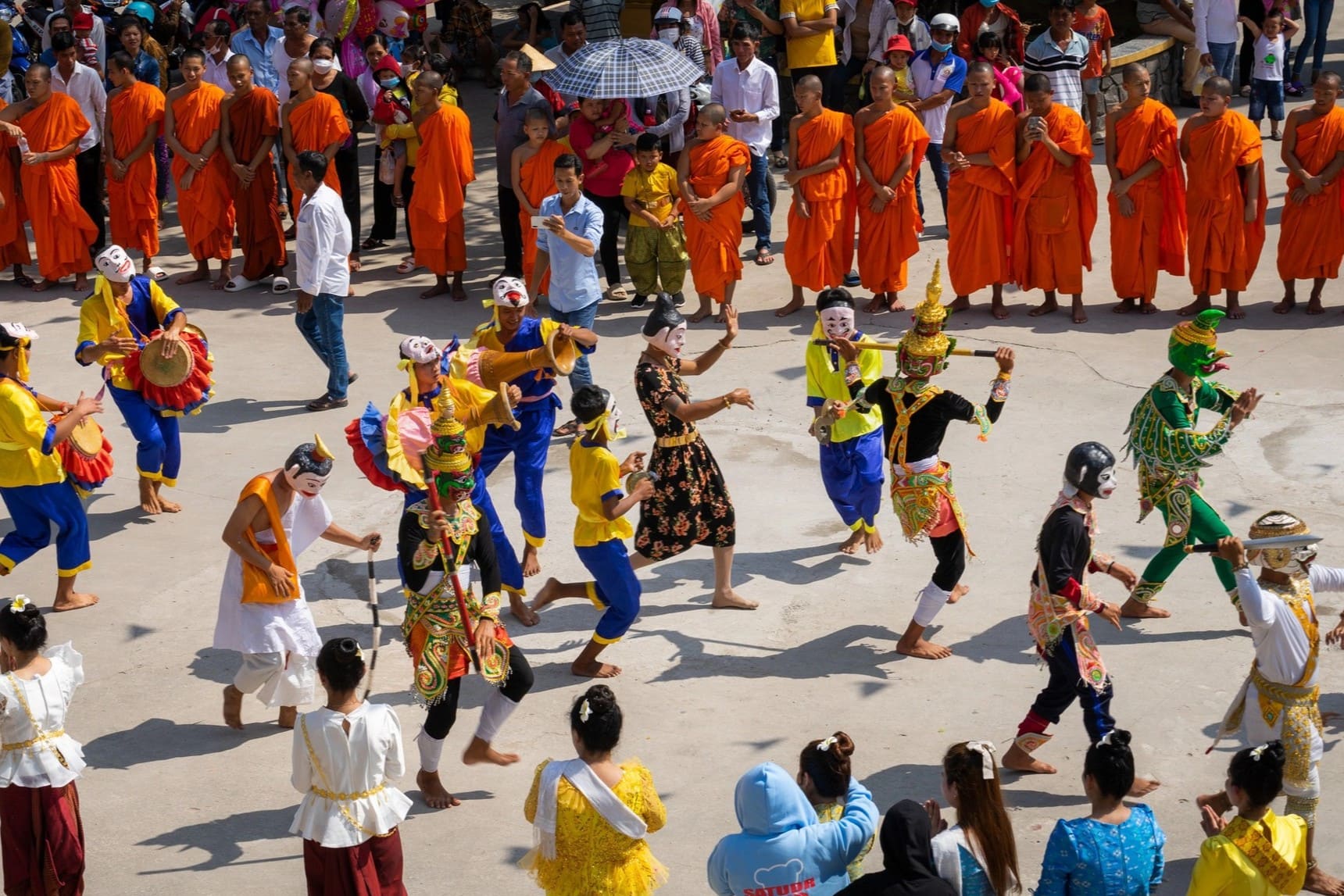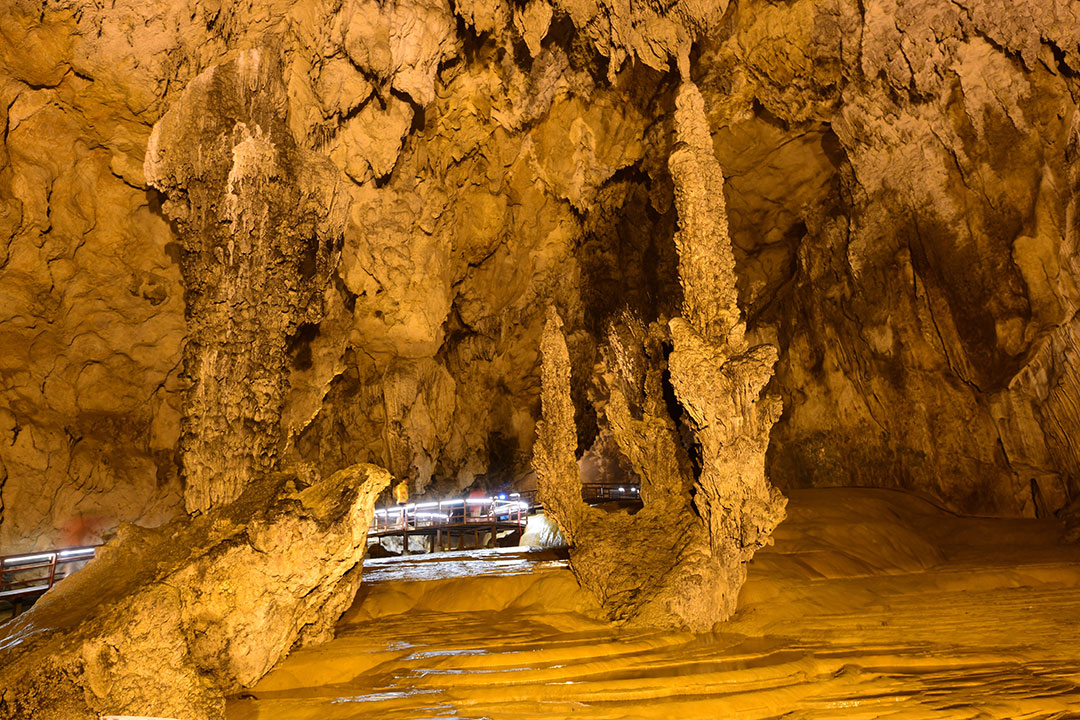Nguom Ngao Cave: Formation, History, Things to Do & Travel Guide
Nestled in the breathtaking landscape of Cao Bang, Nguom Ngao Cave is one of northern Vietnam’s most remarkable natural wonders. Spanning over 2,100 meters, the cave features stunning limestone formations shaped by millions of years of water erosion. Located near the iconic Ban Gioc Waterfall, it’s a must-visit for travelers seeking adventure and natural beauty.
This guide covers everything you need to know before visiting, from its geological significance and cultural legends to travel tips and nearby attractions. Discovered in 1921 and recognized in 1998, Nguom Ngao Cave features rock formations shaped like lotus flowers, waterfalls, and mythical creatures. The cave’s name, meaning "Tiger Cave" in the Tay language, adds a mystical touch to its allure.
For the best experience, timing your visit is crucial. Our guide provides insights on the ideal seasons to explore Nguom Ngao Cave, along with travel options from Hanoi to Cao Bang. If you’re planning a combined trip to Ban Gioc Waterfall, looking for scenic routes, or seeking accommodation nearby, we have all the essential details covered. You shouldn’t miss the chance to pair your visit with other regional highlights like Pac Bo Cave, rich in historical significance.
Overview of Nguom Ngao Cave in Cao Bang
Nguom Ngao Cave is a stunning limestone cave in northern Vietnam, featuring stalactites and stalagmites shaped over millions of years. Located in Gun Village near the Vietnam-China border, this geological wonder is part of the renowned Cao Bang Geological Park.
The cave was discovered in 1921 and officially opened for tourists in 1996, it was designated as a national-level scenic landscape in 1998. Since then, it has become a must-visit destination for those exploring the natural beauty of Cao Bang. Stretching over 2100 meters, the cave features multiple chambers, each adorned with mesmerizing rock formations. Illuminated pathways reveal intricate patterns of stalactites shaped like lotus flowers, cascading waterfalls, and mythical creatures, making it a visual spectacle.
Positioned just a few kilometers from Ban Gioc Waterfall, Nguom Ngao Cave is frequently included in Ban Gioc Waterfall and Nguom Ngao Cave tours. It allows you to experience two of Cao Bang’s greatest attractions in a single itinerary. The combination of lush mountainous scenery, cultural richness, and breathtaking cave interiors makes this site an essential stop for adventurers and nature lovers.
Beyond its aesthetic appeal, Nguom Ngao Cave holds immense geological value. As part of the karst landscape of Cao Bang, it provides insights into the region’s unique limestone formation processes, attracting researchers and geologists. Its proximity to other significant sites in Cao Bang Geological Park enhances its importance as a key location for scientific exploration and ecotourism.
For those planning a visit, understanding the cave’s formation and structure adds depth to the experience.
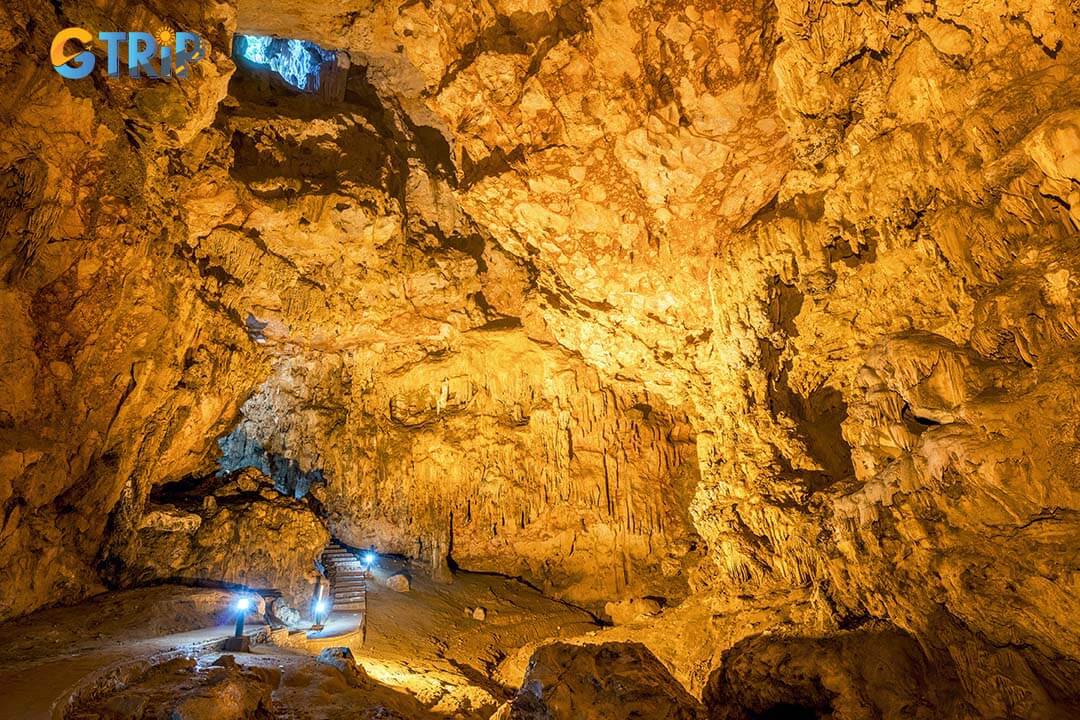
Nguom Ngao Cave is a breathtaking limestone cave in northern Vietnam, renowned for its stunning stalactites, rich geological history, and proximity to Ban Gioc Waterfall
Geological formation and structure of Nguom Ngao Cave
The cave formation is a remarkable example of nature’s artistry, shaped over millions of years by the persistent flow of water eroding the limestone karst landscape of Cao Bang. This geological process has resulted in an extensive network of underground passages, unique rock formations, and awe-inspiring stalactites and stalagmites.
One of the most captivating aspects of Nguom Ngao Cave’s stalactite formations is their incredible diversity in shape and texture. The cave features vast chambers with formations resembling waterfalls, lotus flowers, and mythical creatures, shaped by mineral-rich water solidifying over millennia. The immense size of the cave, combined with the intricate rock formations, makes it an essential part of Cao Bang’s limestone karst ecosystem.
Beyond its geological marvels, Nguom Ngao Cave carries cultural and historical significance, deeply intertwined with local myths and legends.
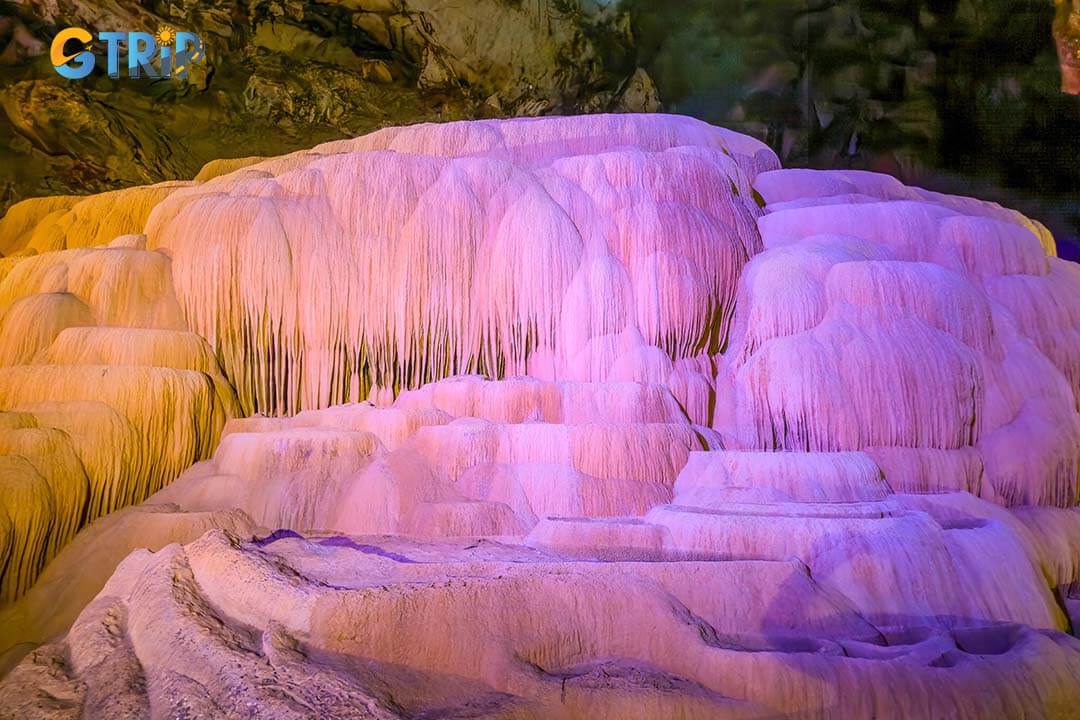
A natural masterpiece, Nguom Ngao Cave showcases stunning stalactites and rock formations sculpted by water over millions of years
The legends and historical significance of Nguom Ngao Cave
Nguom Ngao Cave legends have been passed down through generations, adding a layer of mystique to this breathtaking natural wonder. According to local folklore, the roaring sound of underground water flowing through the cave resembled a tiger’s growl, leading to its distinctive name.
One of the most intriguing Nguom Ngao Cave history accounts suggests that the cave served as a refuge for local villagers during times of war and conflict. Cao Bang, with its mountainous terrain and strategic location, witnessed various battles throughout history. During invasions, people from surrounding villages took shelter inside the vast chambers of Nguom Ngao, hiding from enemy forces. The cave’s hidden passageways and complex network of tunnels provided safety, making it an essential part of local survival stories.
Spiritual beliefs also surround Nguom Ngao Cave, with some locals considering it a sacred place where spirits reside. Ancient traditions suggest that villagers once conducted rituals near the cave’s entrance, seeking protection from natural disasters and wild animals. Today, you can witness the awe-inspiring formations inside the cave, where stalactites and stalagmites take on shapes that resemble mystical creatures and symbols from folklore.
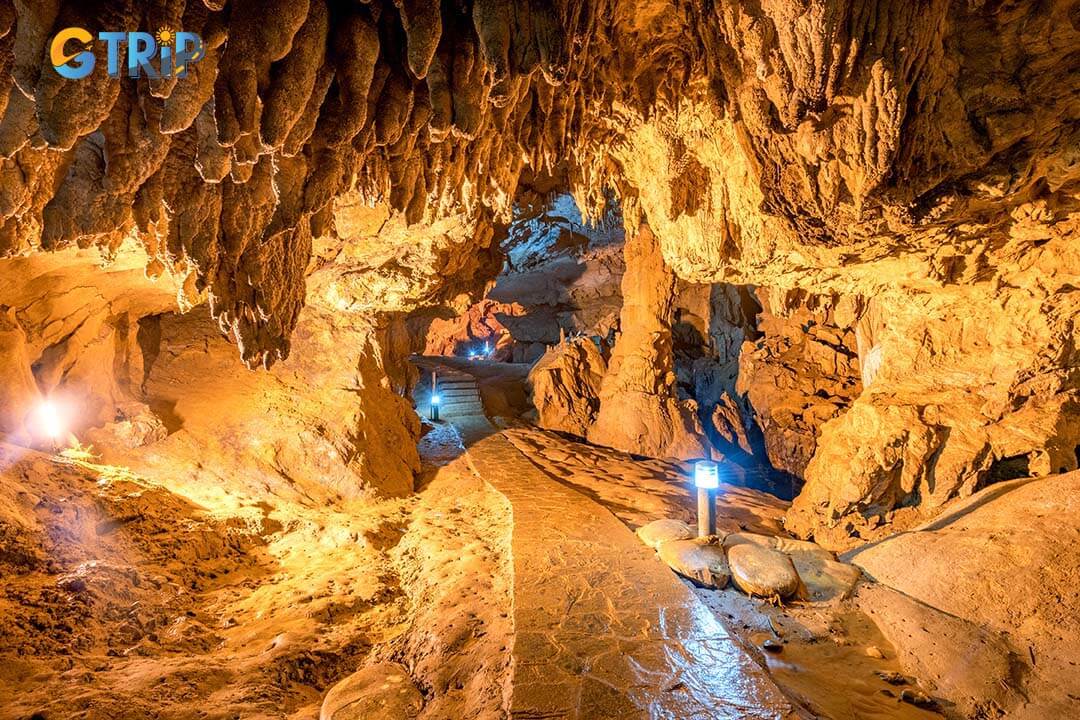
Steeped in folklore and history, Nguom Ngao Cave is known for its mystical legends, wartime refuge stories, and sacred significance to local villagers
4 things to do when visiting at Nguom Ngao Cave
Nguom Ngao cave exploration offers a captivating experience for travelers seeking to uncover the natural wonders of Cao Bang Province. This limestone cave, renowned for its intricate formations and expansive chambers, provides opportunities for adventure, photography, and scenic hiking.
1. Exploring underground chambers
Visitors entering Nguom Ngao Cave are greeted by a labyrinth of underground chambers shaped by thousands of years of water erosion. The main chamber, known for its vast space and towering stalagmites, showcases the geological evolution of the region. Smaller chambers, accessible through narrow passageways, reveal delicate stalactites that hang from the ceiling like frozen icicles. The air is cool and humid, enhancing the sensory experience of navigating this subterranean world.
Guided tours often highlight key formations such as the "Silver Tree" stalagmite and the "Lotus Flower" rock cluster, named for their striking resemblance to natural objects. Pathways are well-lit, ensuring safe exploration while preserving the cave’s ecological integrity. Nguom Ngao's easy accessibility makes it a top eco-tourism destination.
2. Photography of stalactites and formations
Capturing the beauty of Nguom Ngao Cave is a highlight for photography enthusiasts. The cave’s limestone formations create intricate patterns, with stalactites and stalagmites illuminated by strategically placed lighting. Soft, golden lights highlight textures and contours, allowing photographers to experiment with shadows and contrasts. Reflections in shallow pools add depth to compositions, making Nguom Ngao one of the most sought-after Nguom Ngao photography spots in northern Vietnam.
Tripods are permitted in designated areas, enabling long-exposure shots that capture the cave’s dim interior without flash. Photographers should adjust their white balance to account for artificial lighting and bring wide-angle lenses to capture the scale of larger chambers. Due to the humid environment, lens fogging can occur, so acclimating equipment before shooting is recommended.
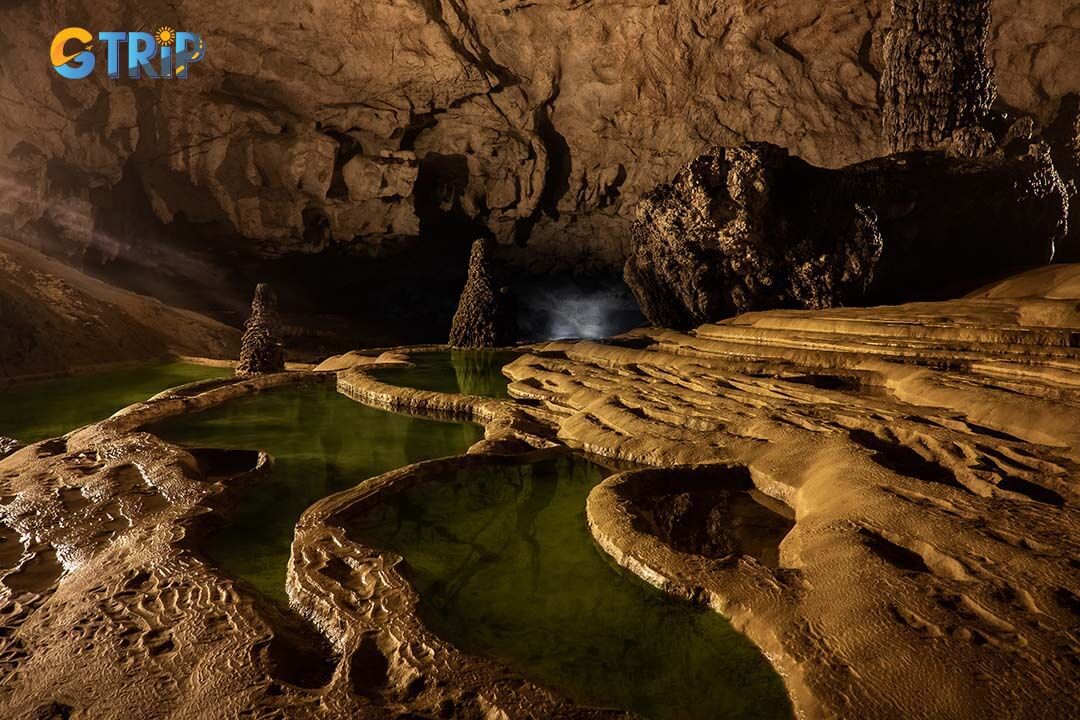
Nguom Ngao Cave offers stunning photography opportunities, with dramatic lighting enhancing its intricate limestone formations and reflective pools
3. Enjoy hiking trails
Nguom Ngao cave exploration offers two distinct routes that highlight the cave’s captivating underground landscape. Each trail presents unique challenges and experiences, catering to both casual explorers and adventure seekers.
The old route:
This route offers a brief 30-minute round-trip through the heart of Nguom Ngao Cave, covering about 800 meters including round trip and return. This path showcases stunning stalactites and stalagmites, including two of the cave’s three sky pillars. With an easy-to-navigate trail and warm yellow lighting, you can enjoy a leisurely walk while admiring the cave’s captivating formations. Entrance fees are approximately US $2/adult (VND 45,000) and US $1.1/child (VND 25,000). For a guided tour, the cost is around US $8.7/person (VND 200,000).
The newest route:
Opened in June 2021, this adventurous 3 km route offers hiking, cave climbing, and underground rafting for a deeper Nguom Ngao Cave experience. Visitors wear protective gear and navigate narrow passages, bamboo bridges, and stunning stalactites before completing the journey through three mountains. The echoes and dripping water enhance the thrill, making it a top choice for adventure seekers.
However, this route is quite risky because the road is slippery and winding, so it is necessary to go in groups and have a guide for safety. Entrance fees with a guided tour cost around US $8.7/person (VND 200,000).
4. Explore Ban Gioc waterfall near Nguom Ngao Cave
Just a short 3-kilometer journey from Nguom Ngao Cave, Ban Gioc Waterfall is an essential stop for travelers exploring Cao Bang. Ban Gioc Waterfall, one of Southeast Asia's largest waterfalls, impresses with its multi-tiered cascades and stunning natural beauty.
The waterfall is uniquely situated on the Vietnam-China border, with one side belonging to Vietnam’s Cao Bang Province and the other to China’s Guangxi region. Measuring about 30 meters high and 300 meters wide, its powerful streams tumble down limestone formations, creating a dramatic landscape. The mist rising from the falls adds to the atmosphere, making it a photographer’s dream and a perfect place for relaxation.
One of the most popular activities at Ban Gioc is taking a bamboo raft ride that brings you right up to the base of the falls. The experience allows travelers to feel the cool mist and hear the roar of the cascading water up close. The surrounding area is also home to Truc Lam Phat Tich Pagoda, a peaceful Buddhist temple that offers a panoramic view of Ban Gioc from above. The route through Cao Bang’s karst landscape, with winding mountain roads and lush greenery, makes the journey as rewarding as the destinations themselves.
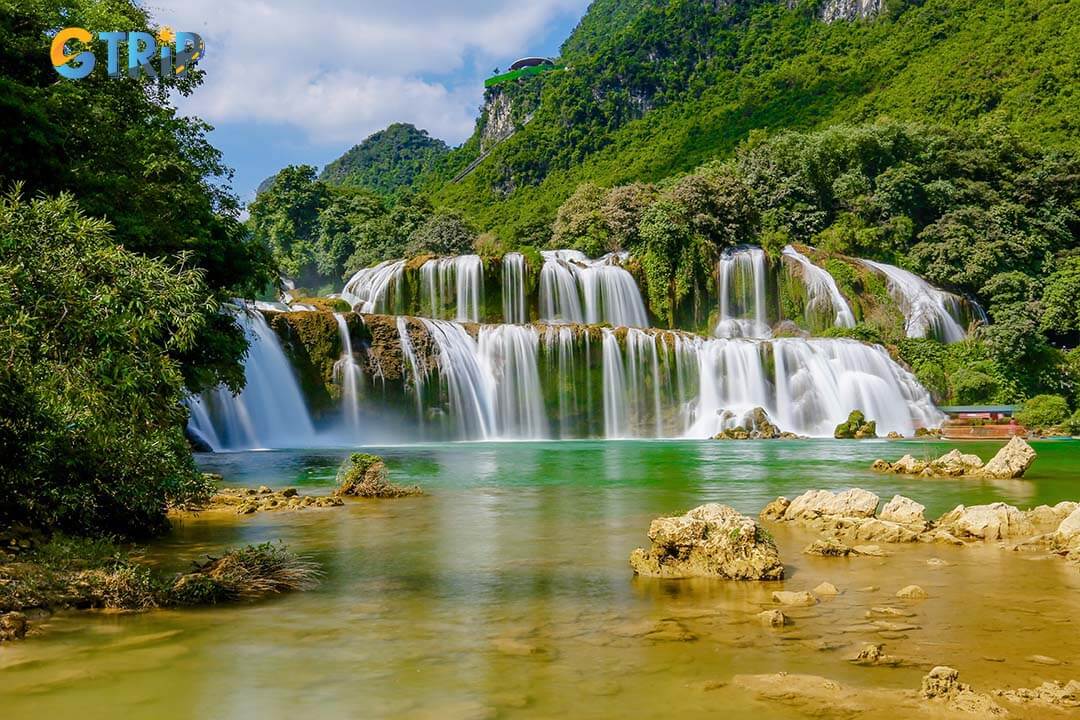
Ban Gioc Waterfall stuns visitors with its multi-tiered cascades and breathtaking border landscape
Entrance fee and visiting hours of Nguom Ngao Cave
Nguom Ngao Cave follows a regulated ticketing system to ensure a smooth and organized experience for visitors. Tickets are available at the entrance booth at budget-friendly prices for all visitors. The standard fee is 45,000 VND (~2 USD) for adults, while children under six can enter for free. Students with valid IDs and residents of Cao Bang Province may be eligible for discounts. Since digital payments are not always accepted, it is advisable to carry Vietnamese Dong (VND) in cash for convenience. For those booking a Vietnam tour package, the entrance fee is often included, eliminating the need for separate purchases.
Nguom Ngao Cave welcomes visitors daily from 07:30 AM to 05:30 PM, providing ample time to explore its vast network of passageways. During peak travel seasons, such as summer holidays and national festivals, the site attracts a higher number of tourists. To fully appreciate the cave’s stunning limestone formations in a more peaceful setting, it is recommended to visit early in the morning before the crowds arrive.
The best time to visit Nguom Ngao Cave
The best time to visit Nguom Ngao Cave largely depends on weather conditions, as the cave's accessibility and overall experience vary throughout the year. The ideal period to explore this natural wonder is during the dry season, which lasts from October to April. During these months, the pathways inside the cave remain dry, making it easier to walk and fully appreciate the impressive stalactites and stalagmites. The cool and stable temperatures within the cave offer a pleasant contrast to the chilly winter air outside, creating an optimal environment for visitors.
In contrast, the rainy season, from May to September, presents challenges due to increased humidity and occasional flooding in some lower sections of the cave. Heavy rainfall can make the surrounding area slippery and more difficult to navigate, especially for those unfamiliar with the terrain. However, this season also brings a unique charm, as the high moisture levels enhance the shimmer of the limestone formations, making them appear more vibrant under artificial lighting. For those willing to embrace a bit of adventure, a well-prepared visit during this period can still be rewarding.
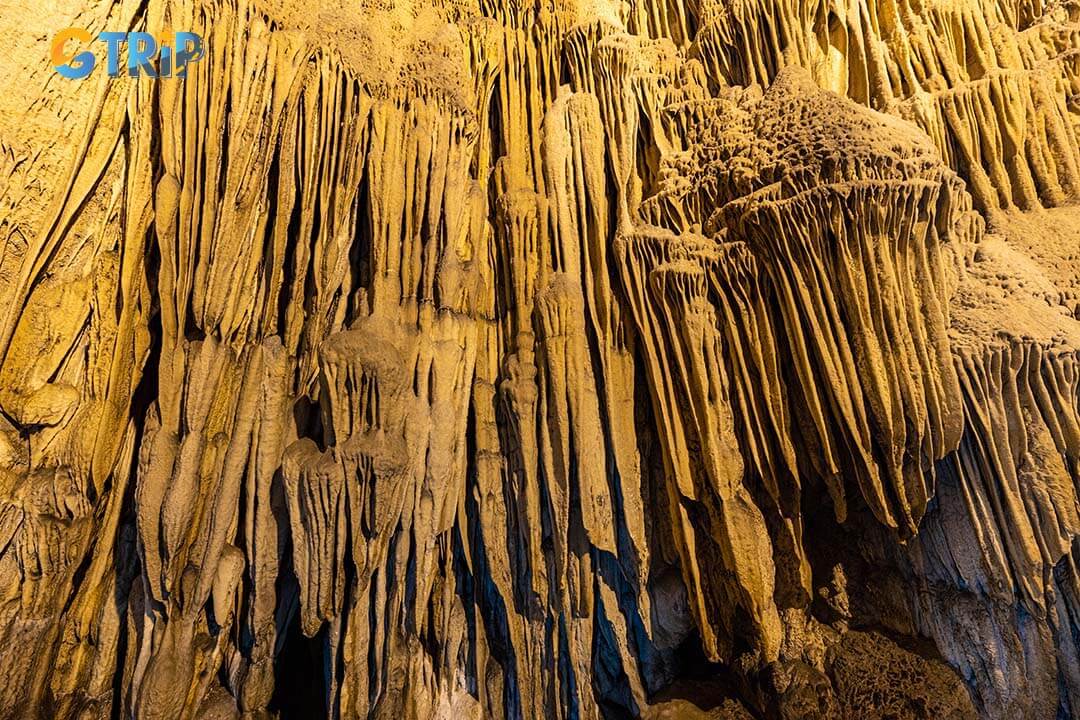
The best time to visit Nguom Ngao Cave is during the dry season (October to April)
How to get to Nguom Ngao Cave? Routes, transport & distance
Reaching Nguom Ngao Cave requires a journey through the picturesque landscapes of Cao Bang, with various transportation options available. If you are from Hanoi or nearby regions, you can choose between buses, motorbikes, or private tours, each offering a unique travel experience.
By bus from Hanoi
For budget-conscious travelers, taking a bus from Hanoi to Cao Bang City is the most economical choice. Multiple bus companies operate daily routes from My Dinh Bus Station, providing both sleeper and seated options. The journey takes approximately 6 to 8 hours, depending on traffic and road conditions. Buses usually depart in the evening, allowing travelers to arrive in Cao Bang early in the morning, making it a convenient overnight journey.
Upon arriving at Cao Bang Bus Station, visitors must continue their journey to Nguom Ngao Cave, which is located approximately 53 km away. Options for transport include renting a motorbike, hiring a taxi, or taking a local minivan. Shared minivans offer an affordable option, though they may require some waiting time for sufficient passengers before departure. Taxis and private car hires are quicker but come at a higher cost.

Budget travelers can take an overnight bus from Hanoi’s My Dinh Bus Station to Cao Bang City, a 6 to 8-hour journey with sleeper and seated options
By motorbike
For adventurous travelers, riding a motorbike is an exhilarating way to experience the stunning landscapes of Northern Vietnam. The journey from Hanoi to Cao Bang spans approximately 280 km and takes around 7 - 8 hours, depending on road conditions. Riders can expect a mix of paved highways and winding mountain passes, making the ride both challenging and rewarding.
The route to Nguom Ngao Cave offers breathtaking views, with notable highlights such as Ma Phuc Pass and Khau Coc Cha Pass. It’s known for its hairpin turns and panoramic scenery. You can make stops at local villages along the way, experiencing the unique culture of the Tay and Nung ethnic minorities. Once in Cao Bang City, the final 53 km ride to the cave takes around 1.5 hours, with well-paved roads leading to the entrance. However, caution is advised during the rainy season, as some sections may become slippery.
By private tour or car
For those prioritizing comfort and convenience, booking a private tour or hiring a car with a driver is the best option. Many Vietnam tours include Nguom Ngao Cave as part of an itinerary covering Ban Gioc Waterfall and other scenic spots in Cao Bang. Private tours provide a stress-free experience with hotel pick-up, guided insights, and customized travel schedules.
Traveling by private car allows visitors to enjoy the journey at a relaxed pace, stopping at various points of interest along the way. The Hanoi to Cao Bang drive takes about 6-7 hours, with several scenic rest stops. Upon reaching Cao Bang City, the road to Nguom Ngao Cave is straightforward, with well-marked signs leading to the entrance. Visitors who prefer a guided experience can opt for structured tours that combine multiple attractions, offering a deeper understanding of the region’s natural and cultural heritage.
Travel tips for visiting Nguom Ngao Cave
Exploring Nguom Ngao Cave requires some preparation to ensure a safe and enjoyable visit. You can wear the right gear to respect the cave’s fragile ecosystem, these practical tips will help you make the most of your adventure.
- Wear proper footwear - Sturdy, non-slip shoes are essential for navigating the uneven and sometimes slippery cave floor.
- Dress appropriately - Lightweight, breathable clothing is ideal, as the cave is cool but humid.
- Protect your belongings - Use a waterproof bag to keep electronics and valuables safe from moisture.
- Stay hydrated - Carry enough water, especially if combining the visit with Ban Gioc Waterfall.
- Watch your step - Walk carefully on damp surfaces and use handrails when available.
- Follow marked paths - Stick to designated routes for safety and to avoid damaging formations.
- Use mindful photography - Avoid excessive flash use and bring a tripod for better low-light shots.
- Respect the cave environment - Do not touch stalactites or stalagmites to preserve their natural growth.
- Visit early - Morning visits offer fewer crowds and better lighting conditions.
- Consider a guided tour - Local guides provide valuable insights into the cave’s history and geology.
- Check weather conditions - Dry season visits are recommended to avoid slippery trails.

Prepare for your Nguom Ngao Cave adventure with essential tips on safety, attire, and responsible exploration to enhance your experience
FAQs about Nguom Ngao Cave
Planning a visit to Nguom Ngao Cave? Here are some frequently asked questions to help you prepare for your trip. Accessibility and seasonal considerations to accommodations and photography guidelines, this guide covers everything you need to know for a smooth and enjoyable exploration of this natural wonder.
Is Nguom Ngao Cave suitable for all travelers?
Nguom Ngao Cave is generally accessible to most visitors, but certain areas require careful navigation. The main tourist route covers 945.8 meters of well-lit pathways, making it manageable for travelers with moderate fitness levels. However, the cave's natural limestone terrain, occasional low ceilings, and damp floors may be challenging for those with mobility issues or young children. For a smoother experience, wearing sturdy shoes and moving cautiously along the designated paths is recommended.
Can I visit Nguom Ngao Cave during the rainy season?
Yes, but with caution. The rainy season increases humidity and water flow, making some areas slippery. You should wear waterproof footwear and expect cooler temperatures inside. However, the rainy season also enhances the beauty of nearby Ban Gioc Waterfall, offering a chance to witness the waterfall at its most powerful. Those who prefer easier access and drier trails may find the dry season (October to April) more favorable for exploration.
Are there any accommodations near Nguom Ngao Cave?
Cao Bang offers a range of accommodations from budget homestays to comfortable hotels. For travelers seeking proximity to Nguom Ngao Cave and Ban Gioc Waterfall, staying in Trung Khanh District is a convenient option. Some local homestays provide authentic Tay ethnic experiences, allowing you to immerse themselves in the region’s culture. Alternatively, Cao Bang City, about 90 km away, has more diverse lodging choices, including hotels with modern amenities.
How long does it take to explore Nguom Ngao Cave?
On average, visitors spend 45 minutes to 1 hour exploring the open tourist section of the cave. Photography and geology enthusiasts may take longer. The cave is often explored alongside Ban Gioc Waterfall on a half-day trip. If planning a full-day itinerary, adding other nearby attractions such as Pac Bo Cave or local minority villages enhances the travel experience.
Is photography allowed inside Nguom Ngao Cave?
Yes, photography is permitted, and Nguom Ngao Cave offers fantastic opportunities for capturing stunning stalactites and underground landscapes. However, using a tripod may be restricted in busy areas. Since the lighting inside the cave is dim, adjusting camera settings for low-light conditions ensures clearer shots. Avoid using excessive flash photography, as it may disturb other visitors and affect the cave’s natural ambiance.
Exploring Nguom Ngao Cave is a fascinating journey through a world of intricate limestone formations shaped over millions of years. The cave's towering stalactites and expansive chambers showcase Vietnam’s geological wonders from a unique perspective. Combined with nearby attractions like Ban Gioc Waterfall, this destination provides an immersive experience for nature lovers and adventure seekers.
To fully enjoy your visit, plan your trip during the dry season when the cave is most accessible. Wear comfortable footwear, bring a flashlight for deeper sections, and prepare for some light trekking inside. With its rich history, stunning rock formations, and captivating legends, Nguom Ngao Cave is a must-see for travelers exploring northern Vietnam. If you’re planning your next adventure, GTrip - Vietnam Travel Agency will offer expert guidance and curated tours to ensure a seamless experience.

